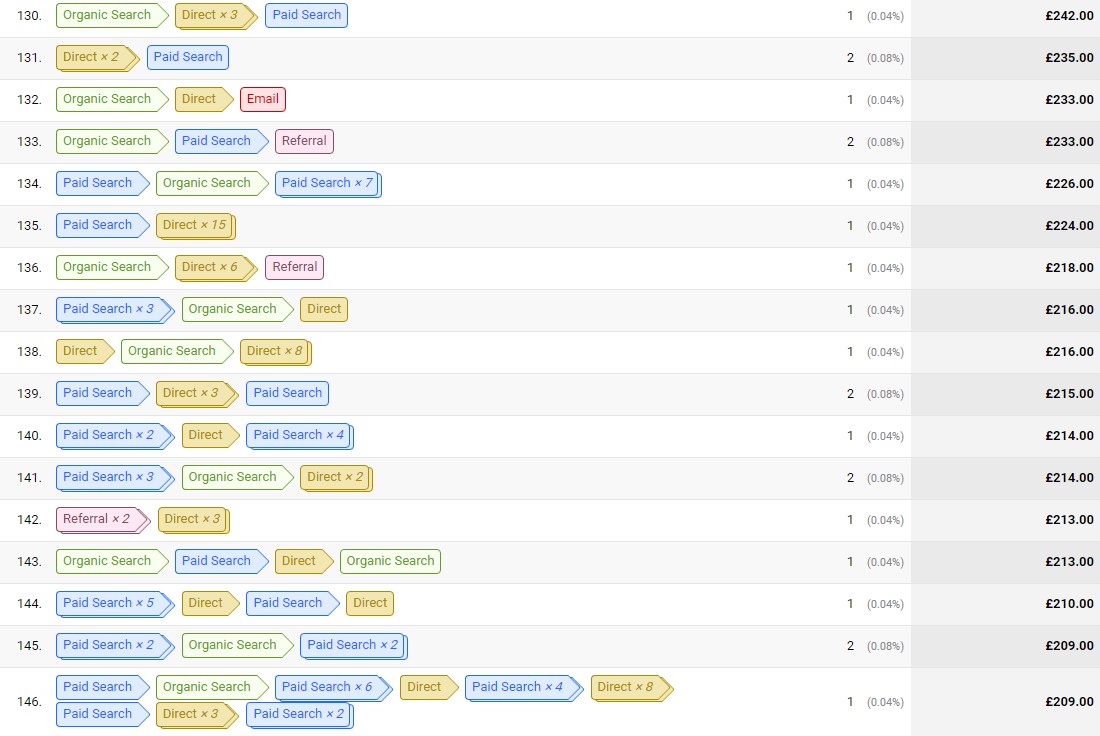Deciphering Your Digital Eco-System
Exploring how to understand your customer journey data can inform your marketing and growth strategy
We are ably assisted by fashion-conscious Bob and his latest online purchase…lovely green corduroy trousers!
When digital beat traditional media spend
In 2019 a largely unnoticed, yet historic internet milestone was achieved. For the first time ever, digital advertising spend overtook traditional media with a whopping $333.25 billion spend; representing 50.1% of global ad spend. This is expected to grow to 60.5% by 2023 (Source: Emarketer 2019).

There are many reasons why business owners, marketing directors, media buyers, agencies and SMEs have progressively shifted their budgets online over the past 20 years. Not least is the fact that everything is 100% measurable. But what do we really mean by that? Can we really measure everything? Well, yes we can. But interpreting, understanding and acting on the data is an entirely different discipline.
So, where should I spend my digital marketing budget?
When developing a digital marketing strategy, the logical approach is to funnel budget into those channels with a proven track record of delivering the most cost-efficient results in the past. If you don’t have any historic statistics, using a seed budget to run proof of concept campaigns will quickly give you a good indication of what works for your business.
This simple principle is central to Vivid’s ROI-focused mantra. We learn, optimise, act and grow your business.
“99% of all statistics only tell 49% of the story.” –
One of the most challenging aspects of delivering an ROI-focused strategy is that behind the hard statistics are real human beings. Customers don’t all behave the same way. Some make quick instinctive buying decisions, whilst others are more considered, taking their time and shopping around. This results in a statistical phenomenon known as ‘multi-channel acquisition’ or ‘assisted conversions’.
In simple terms, this means that when you review the performance of a particular digital channel such as paid search, organic search, display, video, social media etc you’re often not measuring the true results. In many cases, what’s driving sales or leads is a combination of channels working in unison. It’s subtle and nuanced, just like the human beings we’re selling to.
Meet Bob – the attribution nightmare
Bob has just bought some lovely green corduroy trousers from an online gentleman’s outfitters called Shnifties. In the days leading up to his purchase Bob searched ‘green corduroy trousers’ in Google and clicked the Shopping tab. He quickly found his dream pair, clicked through to the website and promptly proceeded to the Shnifties checkout.

But Bob was a frugal kind of chap and decided it might be best to shop around a bit first. After spending two hours looking at all manner of trousers, Bob simply lost the will. The next day, Bob was reminded of his green cords by a Shnifties banner ad that kept popping up all over the internet. But Bob was a busy gent and didn’t really have the time to complete his purchase right then.
Another three days passed and Bob was again reminded of the trousers in an email from Shnifties offering him a 10% discount. Finally, thanks to all that brand exposure Bob searched ‘Shnifties’, clicked an organic search link and returned to the store to complete his transaction.
So, when Shnifties marketing team are reviewing their channel performance, where should they attribute Bob’s purchase? Is it Google Shopping? Perhaps the banner ads? Maybe the promo email? Or should it be Bob’s last organic search click? The answer is all of them in differing measure.
Last Click vs First Click vs Assisted Conversions
In most analytical tools (including Google Analytics) the most simplified reports would allocate Bob’s purchase to the ‘Last Click’, which in this case was organic search. Often major strategic and budgetary decisions are based on this over-simplified approach to attribution. That can be dangerously counter-productive.
Arguably, the most important click was Bob’s ‘First Click’ via Google Shopping. But as each channel contributed to his purchase an ‘Assisted Conversion’ model would provide more useful intelligence for the marketing team. It gives the broader context to Bob’s customer journey and the touchpoints that led to his purchase.
How typical is Bob’s Search for Gentlemen’s Apparel?
According to our recent research, Bob is in the majority of the population. In 2019, 54% of our clients’ e-commerce sales were multi-channel, with very similar figures for lead generation websites.
Below is an example of the journey’s taken by customers on a Vivid client website. In a 12 month period there were a staggering 328 different combinations that led customers to purchase. Clearly some of our client’s customers are even more ‘Bob’ than Bob.

So, how can all this help your business?
Understanding your complex digital marketing eco-system can be daunting and bewildering. But it really is worth getting to grips with.
Getting the full picture and understanding the nuances of your customers journeys can be truly transformational for your business. It can inform your SEO strategy, PPC campaigns, Display Advertising, Social Media, Brand & Marketing Strategy, budgets and much more.
Vivid’s Digital Marketing Team are on hand to guide you through this ‘forest of data’; helping you to make strategic decisions, identify growth opportunities and introduce cost-efficiencies.
For a no-obligation digital analytics review, just give us a call on 0114 2212121 or drop us an email [email protected]
View All Blog Posts →